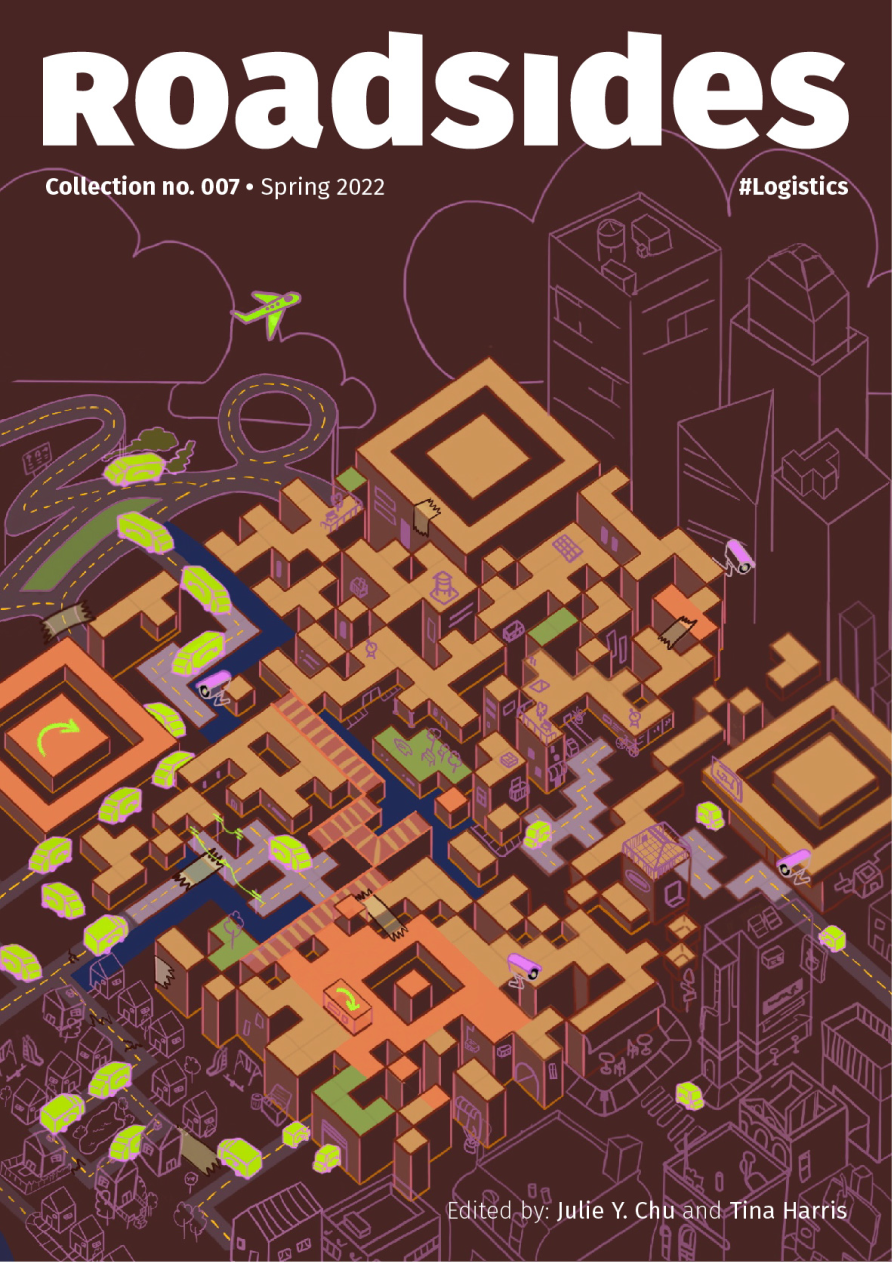
When retail businesses close during the third Covid-19 lockdown in Germany, a woman orders a new pair of trousers through an online webshop. Her order is processed through a network of fiber optic cables, data centers and resource management software. A worker in a warehouse full of clothing stock uses a scanner to log the package’s next step along its route. A delivery driver on ‘the last mile’ stands with gritted teeth as they wait for the customer to answer the doorbell and digitally sign the screen on the handheld that logs their delivery times to each second.
All this logistical work between the order and receipt of a package usually fades into the backdrop for the customer. But then a container ship becomes lodged sideways in the Suez Canal. For a moment, the world buzzes about a “logistical nightmare” before returning to business as usual.
Now you see it, now you don’t…
With this issue of Roadsides, we will take a closer look at the various disappearing acts and occasional spectacles of logistics. Typically, logistics figures only as a secondary dimension of infrastructure in its mundane register as “the study of boring things” (Star 1999). As a managerial science for designing the operative logics of “flow” through various infrastructures (e.g., trade, migration, data), logistics also appears as the handmaiden to the distinct movements it mediates. For instance, until recently, the logistics of commodity flows have been largely understudied in the social science of market economies, as most studies have focused either on production or consumption as an organizing economic trope. Similarly, research investigating the flows of migration or data infrastructures tend to sideline logistics as something not worthy of serious analysis, if they recognize it at all.
And yet logistics is increasingly ubiquitous and essential to how the circulation of people, things, and data get routed, processed or stalled along the infrastructural channels of ports, supply chains, and digital exchange. Inequalities in labour and capital also figure prominently along the ‘backstage’ of infrastructures – packaging, ordering, storage, collection, transport, distribution, and delivery. How can a “logistics lens” help us to uncover the hidden pragmatics of circulation or the organising agencies and sociopolitical stakes involved in movement across various kinds of infrastructures?